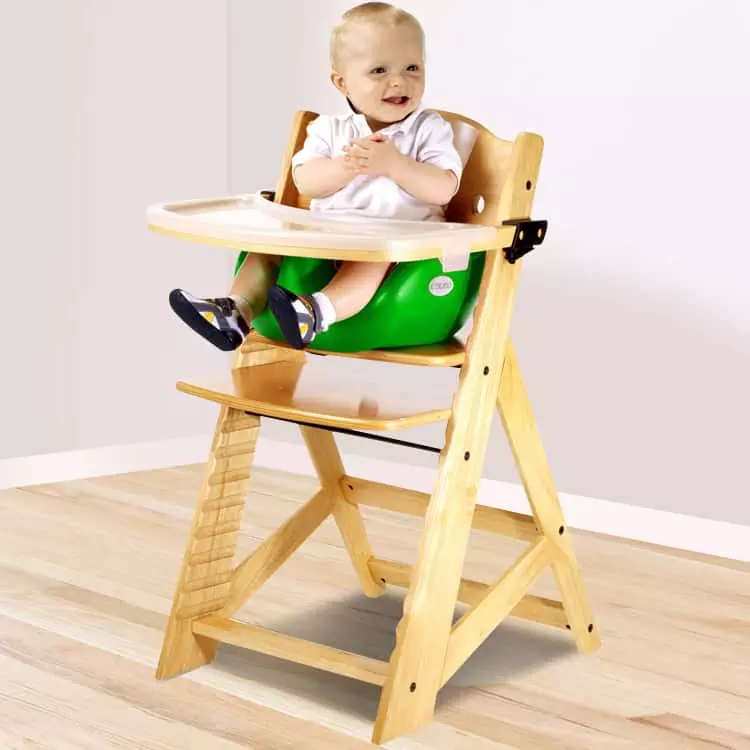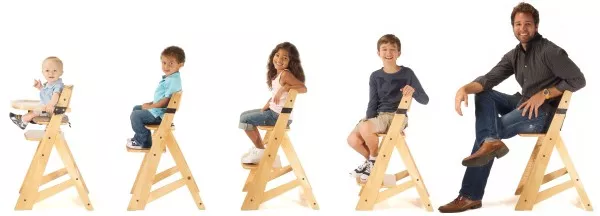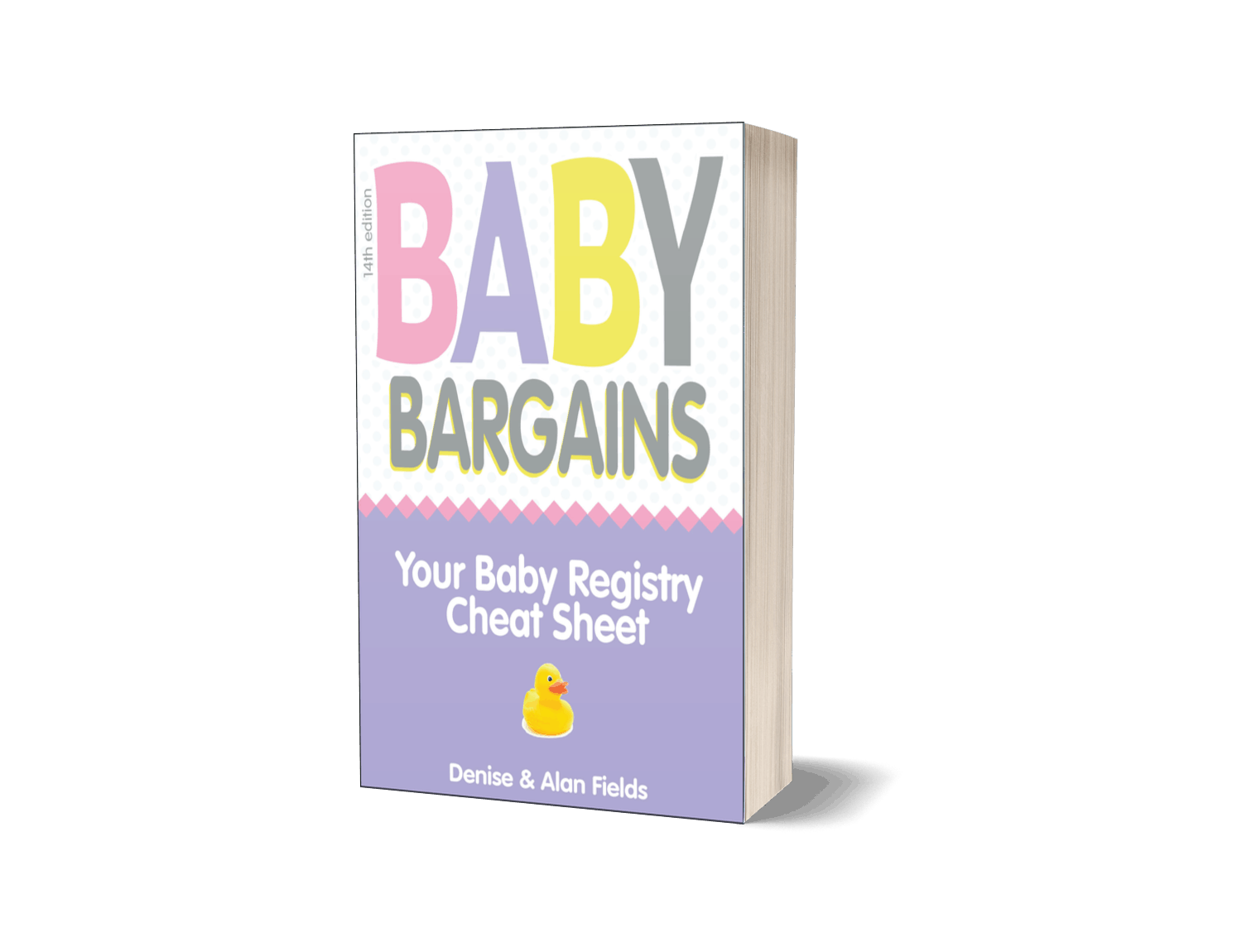 Web: Keekaroo.com
Web: Keekaroo.com
Keekaroo’s Height Right high chairs come in two configurations: a model with an infant insert ($230) designed for babies six months and up and a model without that insert ($165 to $175), intended for babies at least one year of age.
The pitch here is similar to the Stokke Tripp Trapp—the chair morphs from high chair with tray to a toddler chair (sans tray) for kids up to age 3 and eventually a youth chair that can hold up to a 250 pound kid (yep, 250 pounds):
Made in a small town in upstate New York, the Keekaroo earns kudos from our readers for its overall design and durability. While it does take a bit of effort to assemble, the Keekaroo cleans easily and the soft cushion is comfy for infants, say fans. The footrest keeps toddlers’ feet from dangling, which is great for overall comfort.
What’s not to like about the Keekaroo? Well, the tray is small compared to most standard high chairs (7″ x 18″—that’s about half the size of a Graco high chair tray). That means more food is going to end up on the floor. And the tray requires two hands to remove—most competitors have one-hand tray releases. While most folks like the cleanability of the Keekaroo, a few dissenters noted the three holes in the infant seat (that holds the harness at the front and sides) inevitably become food magnets. And unless you have a dog with a long tongue, well, the cleaning there isn’t fun.
The Keekaroo only has a three-point safety harness, while most other high chairs are five-point. While we haven’t seen any reports of babies escaping the chair (according to CPSC’s injury database), we’d prefer the five-point harness.
The Keekaroo is a good value compared to the Stokke Tripp Trapp, as the latter requires another $100 or so in accessories to be used as a baby high chair. But both chairs do not fold up for storage—and the rather large footprint on the Keekaroo had more than one parent tripping over the back legs. Like most wood chairs, there are no wheels to move the heavy Keekaroo around—dragging it across your kitchen floor may damage both the chair and your floor.
Changing the height of the Keekaroo (to work with older kids) requires removing and reinserting 12 bolts with an Allen wrench. You’ll probably have to keep that wrench handy to tighten the bolts from time to time. Finally, the Keekaroo’s wood veneer is easily scratched and chipped from everyday use. (We see much fewer complaints about the Stokke’s finish).
These negatives aren’t necessarily deal killers, in our opinion—just an FYI. Most fans of the Keekaroo think long-term use and wood aesthetics outweigh the drawbacks. We gave the Stokke Tripp Trapp an A-; we’ll give the Keekaroo a similar if not slightly lesser rating of a B+. We like the overall value and multi-stage use, but the tray issues (size, two-hand removal) may have some parents wishing they opted for a traditional plastic high chair. Rating: B+


 We obsess over gear for families and the home . . . so you don’t have to. Baby Bargains has one mission: help you find the best gear for your family with unbiased reviews by experts with 20 years of experience. At prices that don’t break the bank. When you purchase a product from links on this site, we make a small affiliate commission. Learn more
We obsess over gear for families and the home . . . so you don’t have to. Baby Bargains has one mission: help you find the best gear for your family with unbiased reviews by experts with 20 years of experience. At prices that don’t break the bank. When you purchase a product from links on this site, we make a small affiliate commission. Learn more 
